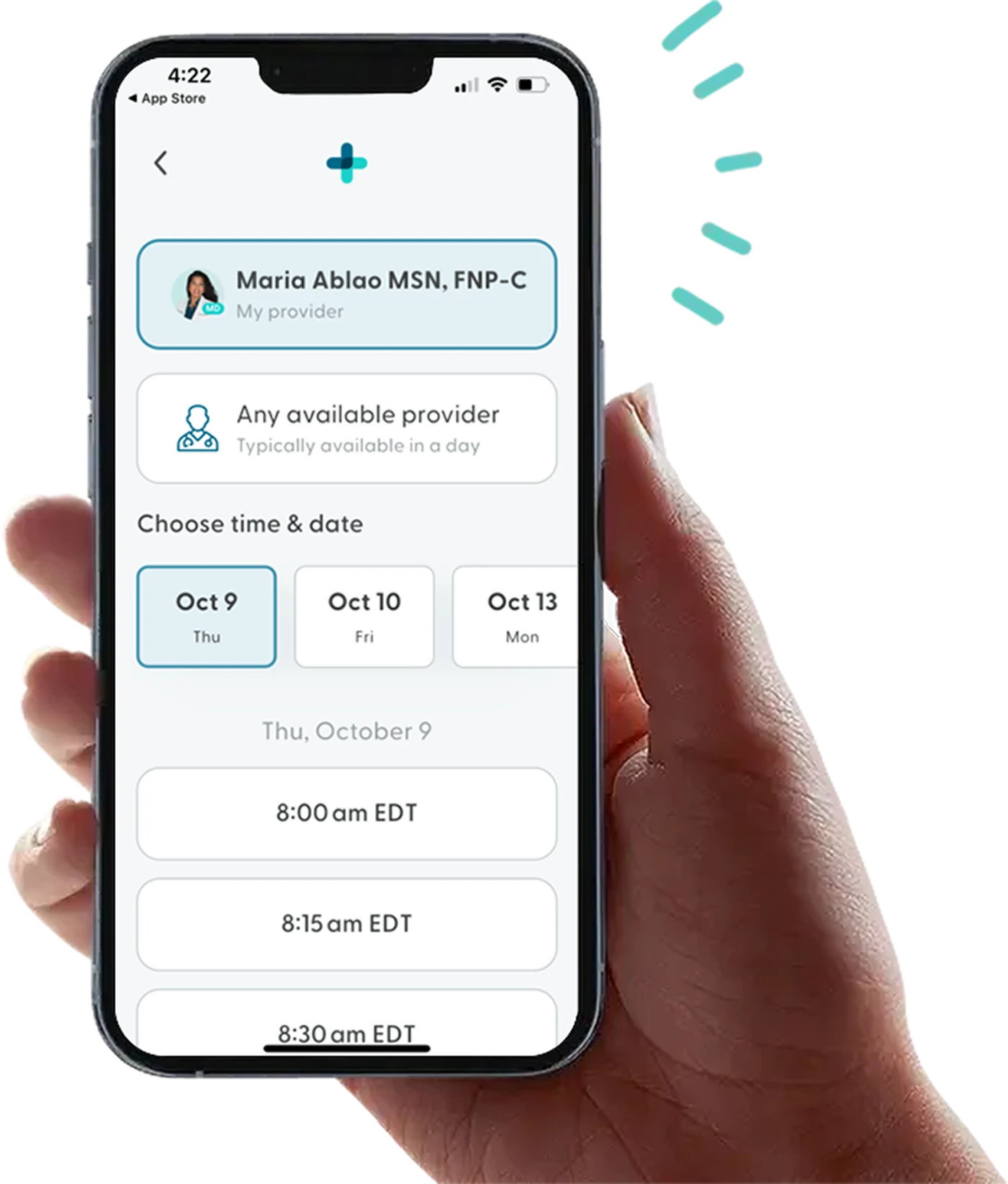What are the Most Common Tree Nut Allergies?
Besides peanut allergies, tree nuts are the most popular allergen among kids in the U.S. Still, tree nut allergies can be difficult to diagnose. Many people diagnosed with an allergy to one type of tree nut may experience allergy symptoms when consuming others, but this is not always the case.
Of the eight main tree nut allergens, the most common tree nut allergen varies globally. In the U.S., the most common tree nut allergen is walnut. However, cashews are another increasingly prominent tree nut allergen in the U.S.
Food allergies affecting your daily life?
Speak to a healthcare provider online about your allergy symptoms today.


What is a Tree Nut Allergy?
A tree nut allergy is when the immune system has an overwhelming response to certain proteins found in tree nuts.
The following foods often have walnuts as an ingredient:
Pralines
Nutella
Nut butter
Baklava
Candy bars
Cereal
Trail mix
Barbecue sauces
Flavored coffees
Macaroons
These are only a few foods that contain tree nuts. If you have a tree nut allergy, health experts recommend thoroughly reading through food labels to avoid allergic reactions.
Key Point: Are Peanuts a Type of Tree Nut?
Peanuts are not tree nuts. Instead, they belong to the legume family. Many people with tree nut allergies may also have a sensitivity to peanuts. However, people with a tree nut allergy can often safely consume other legumes.
What are the Symptoms of a Tree Nut Allergy?
Not every walnut allergy has the same severity. Some people may experience mild symptoms, while others may need emergency attention after consuming tree nuts.
Mild to severe symptoms of a tree nut allergy may include:
Itchiness
Hives
Swelling
Coughing
Wheezing
Abdominal pain
Throat irritation
Nausea
If you have trouble breathing or other severe symptoms, contact emergency services as soon as possible. Anaphylaxis is a severe, life-threatening allergic reaction that can occur in those with a severe tree nut allergy.
A healthcare provider may recommend carrying an EpiPen (epinephrine injection) for those with a more severe allergy. This medication helps to alleviate symptoms while someone waits for emergency medical help.
What is the Most Common Tree Nut Allergy?
Walnuts are the most common tree nut allergen in the U.S. Most develop a walnut allergy as a young child and continue to have it into adulthood. People with a walnut allergy experience an immune response when exposed to proteins in walnuts.
When a person has a walnut allergy, proteins in walnuts bind to IgE antibodies created by the immune system.
What are the Other Major Tree Nut Allergies?
The eight main tree nut allergens are Brazil nuts, almonds, macadamia nuts, pecans, pistachios, walnuts, hazelnuts, and chestnuts. Many people confuse tree nut allergies with seed or legume allergies.
Cashews
Another tree nut allergen almost as common as walnuts is cashews. Most people develop a cashew allergy as children. Health experts believe the prevalence of cashew allergies will continue to grow.
Around 20% of people with a tree nut allergy are solely allergic to cashews. Like other tree nut allergies, symptoms can vary from mild to severe.
Brazil nuts
While Brazil nuts are less common than cashews in the U.S., they are an important food source in Brazil, Bolivia, and Peru. Some manufacturers may list Brazil nuts as their scientific name, Bertholletia excelsa, on a nutrition label. Be careful to avoid Brazil nuts in chocolate, cereal, pastries, and other foods where tree nuts are often used.
Almonds
Almonds are some of the most widely produced tree nuts in the world. They are the third most common tree nut allergens in the United States. However, they don’t tend to produce as many symptoms as walnuts and cashews.
Hazelnuts
The risk of hazelnut allergies is higher in Europe than in the U.S. Those with a pollen allergy may also be more likely to have a hazelnut allergy. Researchers have found that those with a hazelnut allergy are also more likely to have a sensitivity to other tree nuts like walnuts and almonds.
Macadamia nuts
Macadamia nuts are one of the less common tree nut allergens. This type of tree nut is native to Australia. The proteins in macadamia nuts are similar to other allergens like peanuts, pistachios, and lentils.
Pistachios
It’s common for those with cashew allergies to also be allergic to pistachios. Both tree nuts have similar proteins. Pistachios are most commonly found in ice cream, cakes, pastries, and some deli meats.
Chestnuts
Some people may experience symptoms from breathing in chestnut tree pollen. Foods that may trigger a chestnut allergy include hazelnut, chestnut, soy, and kiwi.
What are Potential Risks of a Tree Nut Allergy?
It’s common for people to experience allergy symptoms from cross-contamination. Cross-contamination is when trace amounts of tree nuts may appear on unrelated foods.
Some manufacturers make products in facilities where tree nuts are present. While there is a risk of cross-contamination, it’s less likely that those with a tree nut allergy will experience symptoms from foods that don’t directly contain tree nuts. However, it’s important to still exercise caution.
Cross-Reactions to Watch Out For Between Tree Nuts
Another risk is that different tree nuts may cross-react with each other because the proteins in two different tree nuts can lead to the same symptoms.
This can happen even if you don’t have an allergy associated with both tree nut types. However, having an allergy to one tree nut can lead to a sensitivity to another. While the following are common cross-reactions, they can show up differently in everyone.
Common cross-reactions between tree nuts include:
Pistachios and cashews
Walnuts and pecans
Almonds and hazelnuts
The prevalence of cross-reactions is why many health experts recommend avoiding all tree nuts if you have an allergy to only one. Cross-reactivity also exists among other allergens like shellfish, pollen, seed allergies, and more.
What are Less Common Tree Nut Allergies?
Any tree nut can lead to allergy symptoms. Other tree nut allergens outside of the main nine identified by the FDA include:
Butternut: A nut native to North America from the walnut family. Butternuts are sometimes referred to as the white walnut.
Lychee nut: At the center of the lychee fruit, the lychee nut has some similar proteins to cashews.
Shea nut: Shea nuts may not always produce intense allergy symptoms, but they are commonly used in soaps, lotions, and other cosmetic products.
Chinquapin nut: This type of nut is less commonly consumed and produced within the chinquapin plant.
Hickory nut: Hickory nuts exist in the same family as walnuts and pecans. Those with an allergy to hickory nuts may also experience sensitivity to walnuts, sesame seeds, and other allergens.
Pili nut: Planters in the Philippines produce the most pili nuts. Less is known about having a pili nut allergy and its cross-reactions with other tree nuts.
Coconuts were once considered a tree nut. However, today the FDA considers coconut a fruit and not a major tree nut allergen. Pine nut is a seed allergen often mistaken for a tree nut allergy.
Where Can I Learn More About Food Allergies?
At LifeMD, you can speak with a licensed healthcare provider about what to do if you suspect you have a tree nut allergy. They can give tips for keeping yourself safe during an allergic reaction and safe foods to add to your diet.
Book an appointment today to learn more about managing a tree nut allergy.
More articles like this
Feel better with LifeMD.
Your doctor is online and ready to see you.
Join LifeMD for seamless, personalized care — combining expert medical guidance, convenient prescriptions, and 24/7 virtual access to urgent and primary care.

 Medically reviewed and edited by
Medically reviewed and edited by 








